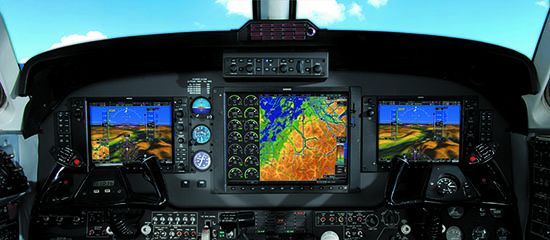Instrument training decisions start with figuring out whether to train in an aircraft with a classic six-pack instrument presentation versus a glass display as we’ll as whether to step up to an airplane that meets the FAA’s standards for a Technically Advanced Airplane (TAA)—one that has a moving map display, IFR GPS and an integrated autopilot.
Unfortunately, there’s more—TAA displays are not standardized. The industry took a massive step forward, in our opinion, in the 1968 aircraft model year with a standardized instrument panel presentation—what we now call the six-pack. It smoothed a pilot’s transition between types of airplanes because the placement of the six primary flight instruments on all panels was the same. A pilot always saw the airspeed indicator in the upper left corner, for example.
When glass displays were introduced, industry and the FAA punted—they did nothing to try to standardize display presentation and functionality, destroying, in our opinion, many of the safety benefits that might have come from the new, information-rich displays. Now a pilot going into a new airplane has to not only learn new systems, but where to look for basic information about what the airplane is doing and how to program the automation.
That means an instrument student who decides to get a rating in, for example, a Garmin G1000-equipped trainer is going to have to spend significant bucks and training time to switch to the same type of airplane that has another manufacturer’s display.
While that can come across as intense criticism of an industry more interested in selling its version of a glass display instead of general flight safety—it most definitely is—it is also a warning to a prospective instrument student about deciding where she or he is going to train.
Bottom line guidance: if you are getting the rating to fly yourself for business or recreation, train in an aircraft with an instrument presentation as close as possible to what you will be flying after the checkride. That often will mean training in your airplane—and may present a challenge in finding an instructor. You may wind up paying an instructor to learn your airplane’s avionics—although you may learn a lot if you sit in on that instruction.
If you are getting an instrument rating because you desire to fly professionally, the odds are that you’ll be flying behind glass—such as in the King Air above—but you can’t predict what brand. The good news is that the company that hires you will train you to proficiency in the avionics/automation. The bad news is that they won’t give you unlimited time to demonstrate proficiency. Accordingly, we recommend training in a glass TAA so that you have experience flying behind glass and programming automation.
In our experience it’s easier to make the switch between types of automation/TAA avionics than it is go from a six-pack airplane without an integrated autopilot into a TAA—or vice versa.
Nevertheless, we also recognize that with a shortage of instructors and flight schools that are full to the gills, your training option may be an aging Cessna 172 with a six-pack and Garmin 430. If you can learn to hand fly the airplane while making full use of the capabilities of the 430, you will be a long way along the path to making the step up to a TAA aircraft.
If the only option is a non-IFR GPS training airplane, we suggest finding another option. Ground-based navigation is slowly disappearing and you may have to fly a long ways to even practice approaches.
Beyond the glass/six-pack decision, we have some suggested strategies for maximizing the benefits of instrument training while minimizing the cost.
• Pick a school that makes heavy use of simulators (in a BATD level or greater unit so the time counts toward the rating)—the benefits of simulator instruction are beyond question, as are the cost savings.
• Immerse yourself—if at all possible, bury yourself in training, flying/simulating daily. If you can’t, keep the time between lessons to a minimum so you won’t spend so much time and money relearning what you already learned. And—this is a big and—make sure that you can take your checkride within a day or two of completing the training. Delay means skill and knowledge degradation and potentially more training.
• Make sure the school will give dual in IMC. After all, flying in IMC is why you are getting the rating. We think the safest introduction to flying in the clag is with an instructor before you get the rating.
• Be fully up to date and current VFR. You don’t want to waste training money relearning how to simply fly the airplane.
• The school should have a plan to move forward if a training airplane breaks or you need to change instructors—delays are expensive.
• Be willing to fully commit yourself to the training process. Put everything else on hold.


